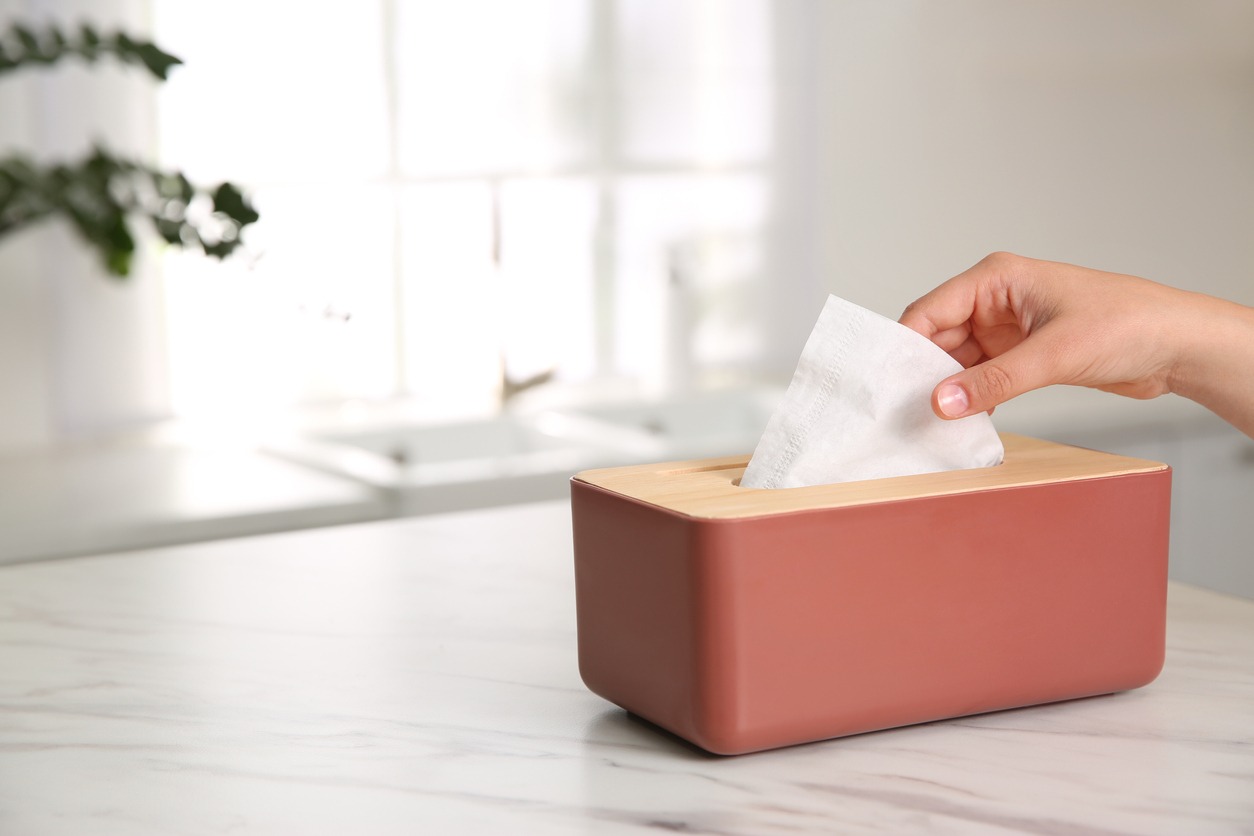Given how soft facial tissues are, it is important that tissue products be manufactured with the right level of softness to protect the skin. One of its main advantages is the texture, which is soft and cushiony. However, there are times when using facial tissues can still aggravate the skin. For this reason, producers make moisturizing tissues that have lotion infused into them for exceptional softness, ensuring that your skin is kept hydrated and moisturized.
Why do we Need Moisturizers?
A person that has a dermatitis with symptoms of dry skin can enhance his or her lifestyle, psychological contentment, and quality of life by having healthy skin because poor presentation can lead to lower self-esteem. That is why moisturizers are frequently used to diminish fine wrinkles, smooth skin, and hydrate skin.
Additionally, the right use of moisturizers can assist both normal skin and dermatoses with symptoms of dry skin. The symptoms of dry skin are an impression of the skin’s condition, which includes visual and tactile alterations as well as sensory component changes. These signs and symptoms include tightness, soreness, itching, stinging, and tingling as well as a dry feeling. Dermatoses that cause dry skin can be successfully treated with moisturizers, which stop the cycle of dry skin while keeping the skin smooth.
What Moisturizing Agents are Added to Lotion Tissues?
The tissue business created its own exclusive, patented blends of moisturizing substances that, when combined and incorporated into the tissue, give the ideal softening without impairing the tissue. The chemicals can soften the tissue paper surface without impairing water absorption too much.
Manufacturers include glycerine, polyoxyethylene glycol, polypropylene glycol, propylene glycol, and other substances in their tissues. Aloe, coconut oil, vitamin E, anti-viral compounds, and menthol extracts are a few of the prominent ingredients that have been incorporated. Other substances include blends of oils derived from silicone or petroleum to further soften the paper, but only in small amounts to keep the tissue from becoming in absorbent.
Benefits of Using Moisturizing Tissues
The following are benefits of moisturizing tissues above ordinary tissues:
- It offers additional softness that has been dermatologist-tested.
- It is mild on skin that is sore or inflamed.
- People with colds and allergies should use it frequently to wipe their noses to avoid chapping and irritation.
- It hydrates the skin.
Some people may find moisturizing tissues to be overly soft at times. Additionally, they are less absorbent than regular tissue. The very smooth-wiping tissues with lotion can help if your nose and upper lips become really raw during the cold season since it feels so much better on chafed and raw skin.
Things to Consider Before Buying Moisturizing Tissues
Price per Tissue
Make sure to consider the overall number of tissues included when deciding which box of tissues is the best purchase. Some of the less priced boxes we examined included noticeably less tissues, which made them more expensive per page. The most precise price to consider is the price per tissue, hence we advise doing so.
Ply Count
Typically, tissues have one to four plies. This is merely a reference to the quantity of paper layers used. The rule of thumb is that the tissue should be thicker, softer, stronger, and more absorbent the higher the ply count.
Soothing additions
Tissues may be more calming to sensitive skin when they contain components like extra moisturizer, aloe, or vitamin E, but they may also feel oily. When cleaning mirrors, glasses, or other shiny surfaces where a filmy residue can be left behind, stay away from using lotion tissues.
Tissues’ strength
A tissue’s resistance to ripping is referred to as strength. After all, what use is it to blow a hole in the tissue before everything is removed? The fiber integrity of these goods can be evaluated using both practical experience and more regulated experiments.
Comfort
Here, comfort essentially refers to how each tissue type makes our skin feel. Along with nose lifespan, we take into account the tissue fibers’ coarseness. How many times should one use a single type of tissue at regular intervals before the skin becomes irritated?
Printed, Scented, or Embossed
All of these “features” have been included for decorative and aesthetic appeal. It’s up to you if you decide to purchase tissues with these characteristics. You just have to make sure the goal – finding tissues with moisturizer. On the other hand, look for a product that doesn’t include them and that is hypo-allergenic if you are sensitive to dyes or scents.
Elemental chlorine-free (ECF)
You may have noticed the claim “elemental chlorine-free bleaching” used on many products. Tissues are bleached to give them their white color. Dioxins, which can be detrimental to both the environment and our health, are produced by elemental chlorine gas.
Not that the product is chlorine-free, but rather that chlorine dioxide, rather than elemental chlorine gas, was used to bleach it, which lessens the likelihood that these dangerous dioxins may form. It’s better to look for a product that is “unbleached” or achieves whiteness with substances other than chlorine (such as oxygen or hydrogen peroxide).
PEFC Certification
International organization called the Program for the Endorsement of Forest Certification (PEFC) seeks to promote sustainable forest management and ensure that wood and non-wood forest products are produced in accordance with high ecological, social, and ethical criteria.
Its products can be recognized by their third-party classification system and PEFC certification marking. The label can be divided into two categories: When a product is PEFC Certified, it signifies that at least 70% of the wood came from managed sources and PEFC-certified forests. Second, the term “PEFC Recycled” designates that the product contains wood from sources under strict control and at least 70% material that has been recycled.
Absorbency and porosity
How much moisture a tissue can absorb before becoming saturated is referred to as absorbency. Additionally, we assess the fiber density and porosity of each product. It’s interesting to note that these two dimensions don’t always correspond favorably. A tissue can sometimes contain a lot of water, yet liquid can also easily move through it.
Packaging
The container that the tissues arrive in, not the tissues themselves, is what constitutes packaging. We examine the ease of opening boxes as well as the crucial one-tissue-at-a-time test because it can significantly affect the user experience. Some products also come in packaging that may enhance their visual appeal or be practical for a certain function.
Conclusion
Knowing that moisturizing tissues considerably limit the spread of germs, have been shown to be gentle on tender or irritated skin, and are excellent for frequent nasal wiping to prevent chapping and irritation, you won’t doubt buying them the next time you go grocery shopping. We believe that we have covered all the necessary information in regards to moisturizing tissues.



